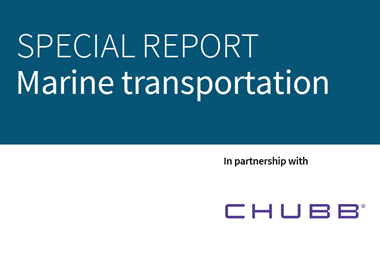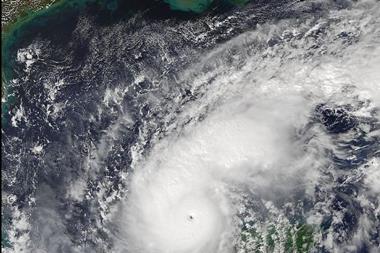This special report also looks at the impact of Solvency II and capitive domiciles serving BRIC economies

Pressure on to make captives work harder
There are a large number of inactive captives around the world, but regulatory pressure and hardening markets are set to prompt owners to reactivate their self-insurance vehicles
With an estimated 20% to 40% of captive insurers dormant or in run-off, it’s no surprise that organic growth, rather than new entities, is expected to fuel the captive industry over the coming years.
The owners of underutilised captives may choose to expand their use as pressure from Solvency II mounts, prices in the commercial market harden, and concerns over emerging risks such as cyber liability continue to increase.
“There are a number of drivers that have led to diversification taking a higher ranking in the order of priorities,” says Aon Insurance Managers (Guernsey) Ltd managing director Paul Sykes.
“The reinsurance market has visibly hardened for the earthquake, windstorm and other catastrophe perils, and there are new risks people are conscious of, such as employee benefits and pensions, and cyber risks. Where there are not established insurance markets for these risks, captives is a good place to start.”
Multiple premiums
Captives - as with any cost centre - have come under more scrutiny as a result of the global economic downturn. Broadening the type of risk channelled through a standalone captive can help achieve economies of scale, diversify a book of business and even provide tax breaks.
“The core principle of insurance is that you have multiple premiums paying for any single loss,” says Sykes. “So if you have a number of lines of business - different classes - hopefully they don’t correlate, and it’s easier to get a greater build of premium and you can accumulate more reserves.
So there are economies of scale, less leakage of premiums to the commercial insurance market, and you have the certainty of cover for being able to finance risks that may not be economic to buy commercially.”
Captives writing mainly long-tail risks, such as professional liability or medical malpractice, may want to consider opening up to short-tail covers.
Single-parent captives may even consider writing third-party business from other organisations, although this may have implications under Solvency II.
Hardening market
An organisation’s use of its captive still tends to follow the general insurance market cycle in that they are
utilised more widely during hard markets, when insurance premiums rise and capacity contracts.
Following major catastrophes around the world in 2011 - resulting in the second most expensive year on record for reinsurers, at a cost of $116bn according to Swiss Re Sigma - the reinsurance market and pockets of the commercial insurance market have begun to harden.
“Because we’re expecting market conditions to get harder as opposed to easier, that should lead to more new formations and organic growth of existing captives,” says Miller head of corporate risks Ken MacDonald.
“I don’t think people realise the scale of inactive captives around the world - they are there for a rainy day in case they are needed - and I think you’ll see a lot more activity in those companies if this situation changes. They will be reactivated.”
I don’t think people realise the scale of inactive captives around the world - they are there for
a rainy day’Ken MacDonald Miller
By increasing the number of lines of business a captive underwrites - in particular by matching non-correlating long- and short-tail lines - a captive can get more use from the capital it holds. With Solvency II impending there is an even bigger driver to capture these diversification benefits.
The fifth quantitative impact study (QIS5) demonstrated these benefits with big numbers. First, using the standard formula it calculated the solvency capital requirements (SCRs) for all participating insurers by looking at individual risks taken in isolation.
The SCR totalled more than €1.3 trillion. By applying the benefits of risk diversification (the principle that a shock on financial markets and a loss of underwriting risks would not necessarily occur at the same time) there was an immediate €466bn reduction in the total risk charge.
“Diversification is the best way for captive owners to manage some of their capital requirements,” says
Chartis head of continental European risk management Jonathan Groves.
“If you have two risks that are not correlated to each other, you could use the same capital to support those risks. In its simplest form, that is the impact.
“This is something we are seeing and something we’re very much trying to lead with captive owners in helping them identify risk areas they can put into the captives to give them a greater opportunity to produce profit.
“We’re looking at both traditional and non-traditional insurance risk areas. Cyber liabilities are being considered, as well as contingent business interruption and general supply chain management. There’s a lot of focus around patent infringement and also trade credit.”
Cyber incubation
The idea of captive incubation is to take advantage of self-insurance to finance new and emerging risks while the commercial insurance market develops a more cost-effective solution. It goes back to the origins of captive insurance, which is to create capacity in difficult times.
For cyber risks in particular, this is becoming an interesting trend. By structuring a self-insurance programme for cyber liability, an organisation is able to build up a claims history and fund its first and third-party exposures at a lower rate than is available elsewhere.
MacDonald explains: “We are seeing a lot of interest in risk incubation - a risk that is currently difficult to insure, and writing that into a captive, sometimes designing bespoke net line capacity behind the captive to, over a period of years, build up understanding that would enable the captive to generate ever more meaningful capacity.”
Preparing for the fallout of Solvency II
With the Omnibus II vote delayed, uncertainty reigns as to how forthcoming EU regulations
will affect the captive industry
With the plenary vote on Omnibus II beset by delays, any hope for clarity on how captive insurers will be treated under the new Solvency II regulation is rapidly dying.
The vote on the legislation that underpins how and when Solvency II will be enshrined has been put back from 2 July to 10 September.
Until that takes place, the ‘level two delegated acts’ spelling out exactly how captives are to be regulated are unlikely to appear.
Amid the uncertainty, captive and risk management associations continue to lobby for fair treatment on behalf of the industry.
While the directive talks about the “principle of proportionality to reflect the nature, scale and complexity of their business”, many captive owners are anticipating that their capital and compliance burden will increase substantially under the new regime.
“Solvency II was designed for commercial insurance companies writing third-party risks with policyholder protection as the driving force,” says Aon Insurance Managers (Guernsey) Ltd managing director Paul Sykes.
“The difference with captive insurance companies is that they are really formalised self-insurance mechanisms for corporations financing their risks. The policyholder is the same as the insurer, so it doesn’t make sense to raise the bar and the capital requirements.
“It just makes it prohibitively capital intensive and therefore expensive to responsibly self-insure if you’re going to put a load of bureaucratic obstacles in the way. There have been previous simplifications and they made it more confusing rather than clearer what the proportionality will be for captives.”
The smallest captives may fall under the radar of Solvency II. It states that insurance entities must have gross premium income exceeding €5m or gross technical provisions in excess of €25m to fall within its scope.
With captives, the policyholder is the same as the insurer, so it doesn’t make sense to raise the bar and the capital requirements’
Paul Sykes Aon Insurance Managers (Guernsey)
Larger captives should also be sufficiently capitalised to meet the requirements under Solvency II’s standard formula, and are also likely to have the infrastructure in place to meet the reporting and compliance requirements.
It is medium-sized captives and those writing longer-tail lines of business that could be most disadvantaged.
“Although they may have enough capital in their company to function, their buffer or element of free surplus is much reduced,” explains Chartis head of continental European risk management Jonathan Groves.
“This gives them less investment discretion and if they wish to write additional lines it will require them to raise additional capital. Or if they suffer a deterioration - particularly in long-tail lines such as employers’ liability or general liability - that will have a far more significant capital impact on them.”
Run-off on the increase
Captives writing third-party business may also suffer under Solvency II, as they could be interpreted as being general insurers and so be regulated as such.
The options for any captive facing an onerous capital and compliance burden is to restructure, relocate or go into run-off.
Anecdotally, it appears that specialist run-off providers are seeing their business increase as captives look to exit the European market or deal with unwanted legacy liabilities.
“I don’t think you’ll find a lot of statistical evidence for this yet, because [Solvency II] is not effectively coming in until 2014,” says Miller’s head of corporate risks Ken MacDonald.
“But anecdotally, yes, we’ve seen quite a bit of discussion about captives potentially looking to move domicile if it is implemented in its current form and captives aren’t given any special treatment.
“There are two sources for that: in talking to some of our clients; and in talking to some of the managers of the domiciles that are not implementing Solvency II, who are very excited about the coming of Solvency II.”
MacDonald warns that if - as predicted - mid-sized captives are disadvantaged by the new solvency regulation, this will have a significant impact on the market, given that “the middle tranche is arguably the biggest tranche of captives in Europe”.
Also it is not just the capital such self-insurance entities will be required to hold that will lead parent companies to question whether it is worth it.
“The capital amount is just one part of Solvency II - it’s all about the process,” says Miller head of analytics Phil Wheeler.
“It’s about those processes and the functions you need to have in place to be compliant. For small to mid-sized captives, which are being managed very efficiently at the moment, to have in place a whole range of additional administration to be compliant with the regulations can be quite onerous compared to much larger personal lines insurers.”
For European companies looking to set up captives in the future, Solvency II will inevitably be something to consider. Opting for an offshore domicile such as Guernsey - which has been clear that it is not seeking third-country equivalence - could reduce some of the compliance burden.
“It’s not feasible for companies that currently use captives to self insure to have an entry level of capital of €3m or €4m,” adds Sykes. “It’s not cost effective.”
Fronting arrangements
There is, however, the cost of fronting to consider. Many European parents pass risk to non-EU captives via fronting arrangements.
Here, a commercial insurance company will underwrite the risk and issue the policy, but then pass on 100% of the risk and premium to the captive. They are happy to do this for big clients for a small arrangement fee. But that could change under Solvency II.
This is an evolving concern, according to Chubb senior vice-president, European risk management Jan Auerbach.
“When we look at our exposure to the captive, it will make it more difficult for a European company with a Guernsey captive that might not be Solvency II-compliant - because we will need to look at that captive with a different set of spectacles.
“If it’s going to be regulated in a significantly different way, we need to understand what the impact is in terms of our exposure, and that’s going to make the transaction more complex.”
He adds: “If you’ve got clients utilising captives that are not Solvency II compliant, that is an added transaction cost for everyone. Clearly we need to understand that when we work with them.”
Look to the east for a captive
They may still be in their infancy but a growing number of captive domiciles are serving the BRIC economies
While the mature captive domiciles of Bermuda, Cayman, Vermont and Guernsey continue to dominate the market, there are now more than 100 domiciles that license and regulate captives around the world. As of 2009, there were estimated to be some 5,000 captives globally.
Just as the world’s macro-economy is shifting eastwards, so too will captive interest and formation. While the western economies stagnate, those in the east are developing, and a new generation of corporate entity is evolving in Asia, Australasia, eastern Europe, Latin America and the Middle East.
Catering to rapidly developing local economies, these entities are starting to provide the essential ingredients of successful captive domiciles. Many of these markets are still in their infancy, but firming rates and improving risk management awareness are driving slow but steady growth.
A rating first
When AM Best assigned its first Asia-based captive rating in March 2011 it signalled an important shift.
Its rating of Energas Insurance Ltd in Labuan, Malaysia - the primary insurance carrier for Malaysian state-owned oil and gas company Petronas - marked the “latest step in the growth of captive usage in Asia”, noted the rating agency, adding that: “The global practice of major corporations self insuring through captives shows further signs of establishing itself in the major insurance markets of the Asia Pacific region.”
At present, Singapore is the largest captive market in Asia, boasting 66 self-insurance entities and captive premium of Sing $813m (€508m); followed by Labuan, with 36 captives and captive premium of US$177m (€142m). For multinationals based in Australasia, India and elsewhere, such domiciles offer a local time zone and familiar business culture.
While the Asian captive market had been stagnant over the past few years, reflecting the soft market for (re)insurance rates, the market has turned significantly following last year’s catastrophe losses throughout the region.
The growing expense of catastrophe reinsurance cover, along with the need to finance emerging exposures, may see savvy Asian multinationals look more closely at self-insurance than they did in the past.
“History tells us that when the market retreats or becomes difficult, that’s when captives step in,” says Miller’s Ken MacDonald.
Supply chain exposures
Something that the floods in Thailand and the Japanese earthquake revealed was the impact of major events on global supply chains, with a lack of cover in place for contingent business interruption.
Willis Re chairman Peter Hearn says: “Exposures were significantly underestimated, especially as regards the extent of global connections across sophisticated supply chains.
“This is leading to tighter sub-limits for natural catastrophe, and reduced event limits on pro rata treaties. The overall loss from the Thai floods is still developing, but the technical and psychological impact of this loss on the global insurance industry will far outweigh the ultimate financial loss for years to come.”
AM Best reports that companies are becoming more sophisticated with their insurance purchasing, and are exploring different alternative risk transfer options.
High-profile losses are driving many organisations to play closer attention to risk management practices, including health and safety and business continuity.




















No comments yet